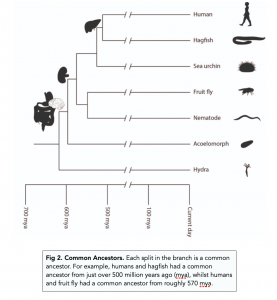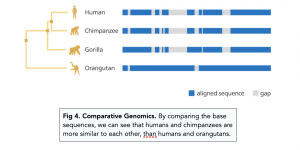The Three Domain System (A-level Biology)
The Three Domain System
Domains and Kingdoms
Domains
All life on Earth can be characterised into three Domains:
- Domain Bacteria: this domain comprises of unicellular prokaryotic bacteria.
- Domain Archaea: this domain comprises of unicellular prokaryotic organisms that are similar to bacteria but are in some ways more related to eukaryotes.
- Domain Eukarya: this domain comprises of all unicellular and multicellular eukaryotic organisms.
Kingdoms
Each Domain can be broken down into different Kingdoms. In Domain Eukarya, there are four major Kingdoms:
- Kingdom Prokaryotae: is made up of the various prokaryotes, which are unicellular.
- Kingdom Protoctista: is made up up of mostly unicellular protists such as amoeba and paramecia.
- Kingdom Fungi: is made up of all the various types of fungi.
- Kingdom Plantae: is made up of all the true plant species on earth.
- Kingdom Animalia: is made up of all invertebrate and vertebrate animals on earth.
Phyla
Each Kingdom can be broken down into different Phyla (sing. Phylum). The Kingdom Animalia consists of eleven distinct phyla.
Class, Order, Family, Genus, Species
- Each phylum can be broken down into many different classes. Classes are designed to group together similar species within a phylum.
- Classes are further broken down into orders.
- Orders are further broken down into families.
- Families are further broken down into genera.
- Genera are further broken down into species.

Advances in Immunology and Genome Sequencing
The study of taxonomy relies heavily on the field of phylogenetics. Phylogenetics is a series of techniques that can be used to find similarities between organisms when classifying them. In this section, we will discuss two important techniques used to help group organisms together.
Immunological Techniques
- Antibodies bind to a specific antigen. Antibodies are specialised proteins which recognise and bind to a particular antigen.
- Antigens can vary between species. Antigens with similar functions can have different structures in different species. Therefore, an antibody from one species may not recognise the same antigen in another species.
- Haemoglobin antibodies are used when comparing humans to animals. Antibodies against human haemoglobin can be used to identify organisms similar to humans. Almost all organisms have haemoglobin. If the antibody binds, the organism may be related to humans because it means the structure of the haemoglobin is similar.
Gene Sequencing
- Advances in biotechnology have made gene sequencing easier. Technology has led to the ability to rapidly and easily sequence entire genomes of different organisms.
- Determine entire base sequence. When a genome is sequenced, we can determine the base sequence of the entire DNA for a particular species.
- Compare to other species. These sequences can be compared with other species.
- Assess similarity. The more similar the DNA sequence is between species, the more closely related they are. The more different the DNA sequence is between species, the more unrelated they are.
This field is known as comparative genomics.






Still got a question? Leave a comment
Leave a comment